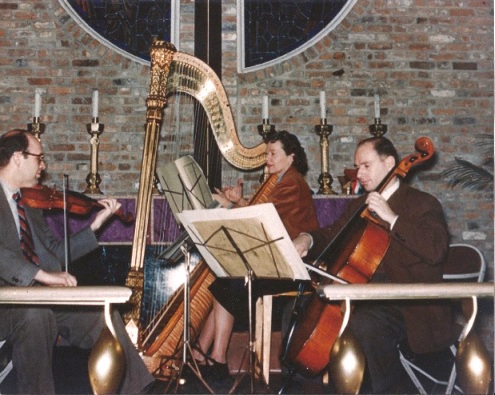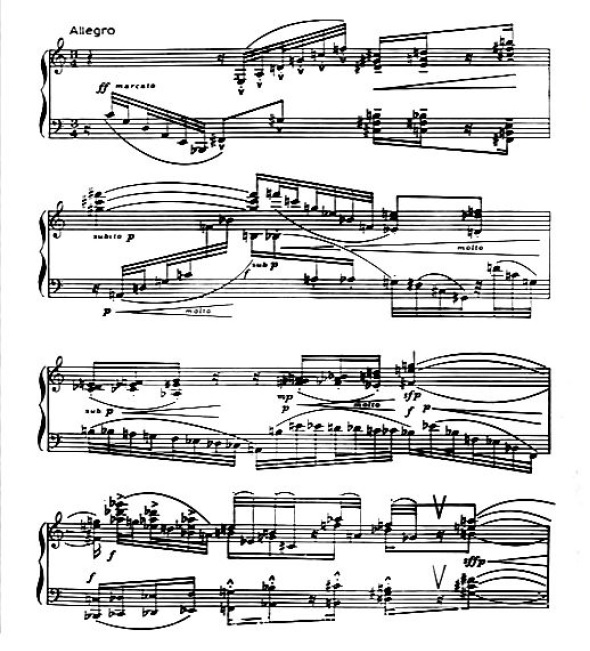
CASELLA: Harp Sonata. RESPIGHI: Notturno (arr. Newell). Antiche Danze ed Arie (arr. Newell). DONIZETTI: Lucia di Lammermoor: Harp solo (arr. Albert Zabel). BAX: Harp Quintet.* IBERT: Trio for Violin, Cello & Harp.* MALIPIERO: Sonata à cinque* / Laura Newell, harpist; *with members of Stuyvesant String Quartet: Sylvan Shulman, Bernard Robbins, vln; Ralph Hersh, vla; Alan Shulman, cel / Artek AR-0067-2
This unusual but, in my view, valuable CD showcases the talents of one of the most extraordinary harpists who ever recorded, Laura Newell (1900-1981). A child protégé out of Denver, Colorado, she studied first with Kajetan Attl and then at the New England Conservatory of Music with Alfred Holý. In the male-dominated era of the 1930s and ‘40s, she became principal harpist with Artur Rodziński’s Cleveland Orchestra and also played with the National Symphony Orchestra. After moving to New York, she freelanced with the Bell Telephone Hour Orchestra, WOR’s Wallenstein Sinfonietta and the NBC Symphony Orchestra, which is where she met the extremely talented Shulman brothers, Alan (cello) and Sylvan (violin). Alan Shulman, who also had a keen interest in jazz, was so knocked out by Newell’s ability to play jazz harp that he organized a small band called The New Friends of Rhythm, partly to showcase her extraordinary talents. Thus Newell was, along with Casper Reardon and Adele Girard, one of the three greatest jazz harp players who ever lived. The recordings prove it. Not only could all three improvise, they could also swing, which, as Girard pointed out in later years, is nearly impossible to do on the harp because of all the pedaling involved which requires extraordinary coordination with one’s hands. In later years, Newell played the harp on not one but two recordings of Benjamin Britten’s A Ceremony of Carols with the Robert Shaw Chorale. (She also recorded Debussy’s Sonata No. 2 for Flute, Viola & Harp with violist Milton Katims and flautist John Wummer for a Columbia LP in 1949.)
Unfortunately, since she lived until 1981, Newell seems to have given up performing sometime in the 1950s when she went into teaching, thus there are no recordings of her playing after about 1957. For this reason alone, this outstanding CD, produced by Jay Shulman, is a valuable testament to her extraordinary talents. According to the liner notes, “Her student and close friend, founding editor of the American Harp Journal Sam Milligan, said that she had ‘the cleanest technique I ever heard.’ She retired in the early 1970s [from teaching] and devoted her creative activity to painting watercolors, calligraphy and enamels.”

Newell with Sylvan and Alan Shulman
These recordings were made for the Shulman brothers’ Philharmonia Records label, not to be confused (which it sometimes was) with the British Philharmonia Orchestra. Like so many independent classical labels of the early LP era, starting a record label was relatively easy; it was the production, marketing and promotion that were difficult, in this case particularly so since Philharmonia only released serious classical recordings. Perhaps this was one reason why Newell tossed in the rubbishy harp solo from Donizetti’s Lucia di Lammermoor onto her harp solo recital, trying to generate some sales to people who wouldn’t have known Alfredo Casella from Alfred Drake.
The Casella sonata, touted by Newell in the liner notes as “unquestionably a masterpiece of the genre,” I found to be a good piece if not on a par with the music that Alberto Ginastera later wrote for Nicanor Zabaleta. It occupies that strange no-man’s-land between Romantic and early Modern music, using a few unusual chord patterns (and chord positions) while maintaining a lyrical melodic line, but careful listening will show you that this is a very technically involved piece, and perhaps that was what Newell was referring to. Newell, again, suggests as much in her description of the piece as one “raising some unusual and subtle musical problems, [which] dictates a special kind of ‘technique within a technique.’ As an instance, the performer gains clarity by stopping the vibrations of the strings immediately after playing various chords and passages.” I did, however, particularly like the third movement with its jolly-but-slightly-satirical use of roulades and fanfares, as Newell put it, “contrapuntally developed with infinite variety up to the giocoso conclusion.”
Personally, I liked the Respighi Notturno which, in Newell’s own arrangement, is more interesting; the rhythmic and harmonic interplay of the “inner” portion of the score is so well executed that, at times, it sounds like two harpists playing rather than one. No wonder Sam Milligan was bowled over by the cleanliness of Newell’s technique. In this piece, too, she creates an ethereal, almost haunting mood. Of the same composer’s Ancient Airs and Dances, I felt, as with the Lucia solo, that it was included on the disc to help sell copies, although the “Siciliana” is technically very tricky. (The “Villanelle” was based on a lute song by John Dowland.)
Much to my surprise, Newell’s version of the Lucia harp solo is one of the highlights of the album; Albert Zabel’s “arrangement” makes it a far more interesting piece, with multiple examples of double-time and stop-time passages, technical marvels almost beyond description, all of which Newell knocks off as if playing it in her sleep. Donizetti never sounded this good, TRUST ME!!!!
Then we move on to the collaborations with the Stuyvesant Quartet, starting with Arnold Bax’s Harp Quintet, clearly one of the best chamber works he ever wrote. Imaginative, unpredictable and often daring, the music darts in and out of various medium- and fast-paced figures in the first movement, all of which the Stuyvesants play with breathtaking technical skill. But this surely was an album that would only have sold to hard-core classical lovers, and particularly lovers of at least moderately modern classical music of the time. The sound quality of the recording, however, doesn’t really seem to be up to 1951 standards; it’s a little “covered” in the upper range, which dampens the usually-glistening strings of the quartet. Even Newell’s harp doesn’t sound as clearly recorded here as on her 1953 solo album. And it’s not just the upper strings that suffer; in the slow central section (it’s a one-movement piece divided into fast-slow-fast portions), the viola and cello sound muddy. I’m pretty sure that I know what happened, however, because I encounter the same thing when I try to restore old recordings with too much surface noise, clicks, pops etc: when you clean up an old recording this much, you need to then brighten the sound by boosting the treble by a couple of decibels, and this Artek recordings did not do. If you buy this album as a download, however, I recommend doing it yourself. It will only take a few minutes, and in the long run you’ll be much happier with it.
Sure enough, the Ibert Trio sounds much crisper and clearer, which means that a better copy of it was used for transfer, and this, too is a fine piece, if in a lighter vein than the Bax, but the wonderfully crisp-yet-lightweight style of the musicians make the music bounce and sing. It’s really a shame that, except for Alan Shulman collectors, the Stuyvesant Quartet is virtually forgotten today. They not only played with an astounding command of technique, but also with élan in fast movements and wonderful sensitivity in slow ones. Newell is not really covered or marginalized by their presence, but since they were so good and got the lion’s share of the music, she only shines occasionally, yet enough to judge how good she was, particularly in the last movement of the Ibert.
The Malipiero Sonata à cinque is another piece caught between late Romanticism and early Modernism, but a taut, well-written piece for all that, and it receives a springy and spirited reading from these five musicians. Without having heard other recordings of this piece, I honestly can’t imagine it being performed any better than this, and here, too, the sound quality is relatively clear.
This is, on balance, an outstanding CD, and not just for harp fanciers. The level of musicianship is met by the generally high quality of the pieces performed, making this a must-hear for aficionados of these composers.
—© 2022 Lynn René Bayley
Follow me on Twitter (@Artmusiclounge) or Facebook (as Monique Musique)
Return to homepage OR
Read The Penguin’s Girlfriend’s Guide to Classical Music












 SHIPP: Tangible. Sustained Construct. Spine. Jazz Posture. Beyond Understanding. Talk Power. Abandoned. A Mysterious State. Stop the World. Shy Glance. World Construct / Matthew Shipp, pno; Michael Bisio, bs; Newman Taylor Baker, dm / ESP-Disk 5059
SHIPP: Tangible. Sustained Construct. Spine. Jazz Posture. Beyond Understanding. Talk Power. Abandoned. A Mysterious State. Stop the World. Shy Glance. World Construct / Matthew Shipp, pno; Michael Bisio, bs; Newman Taylor Baker, dm / ESP-Disk 5059